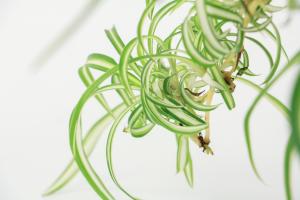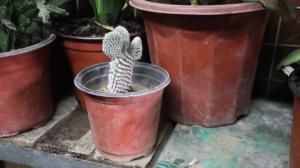Introduction
Tomato plants are a common sight in gardens and farms, but they are also prone to fungal infections. Fungal infections can cause the leaves and stem to wilt and eventually kill the plant. In this article, we will discuss how to get rid of tomato plant fungus.
Identifying Tomato Plant Fungus
Before you can treat the fungus, you need to identify it. The most common tomato plant fungus is early blight, which shows up as dark spots with concentric rings on the leaves. Another common fungus is late blight, which looks like water-soaked lesions on the leaves and stems. Powdery mildew appears as a white, powdery substance on the leaves and stems. Once you have identified the fungus, you can take steps to get rid of it.
Prevention
Prevention is the best way to avoid tomato plant fungus. Here are a few tips to keep your tomato plants healthy:
- Water your tomato plants early in the morning, so they have a chance to dry out during the day.
- Space your tomato plants properly, to allow for air circulation.
- Remove any infected leaves or stems immediately.
- Don't over-fertilize your tomato plants, as this can encourage fungal growth.
Chemical Fungicides
Chemical fungicides are a quick solution for tomato plant fungus, but they should be used sparingly. Fungicides contain chemicals that are harmful to beneficial insects and can contaminate the soil. If you must use a fungicide, choose one that is labeled for use on tomato plants and follow the directions carefully.
Organic Solutions
Organic solutions are a safer and more environmentally friendly option for getting rid of tomato plant fungus. Here are a few methods to try:
- Baking soda spray. Mix 1 tablespoon of baking soda with 1 gallon of water and spray your tomato plants every 7-10 days.
- Neem oil spray. Mix 2 tablespoons of neem oil with 1 gallon of water and spray your tomato plants every 7-10 days.
- Milk spray. Mix 1 part milk with 2 parts water and spray your tomato plants every 7-10 days.
These organic solutions are effective, but they may take longer to show results than chemical fungicides.
Conclusion
Tomato plant fungus is a common problem, but there are many ways to get rid of it. Prevention is the best method, but if your plants do become infected, there are both chemical and organic solutions to try. By taking steps to prevent and treat fungus, you can ensure a healthy and abundant tomato harvest.

 how many times do yo...
how many times do yo... how many planted tre...
how many planted tre... how many pine trees ...
how many pine trees ... how many pecan trees...
how many pecan trees... how many plants comp...
how many plants comp... how many plants can ...
how many plants can ... how many plants and ...
how many plants and ... how many pepper plan...
how many pepper plan...
































